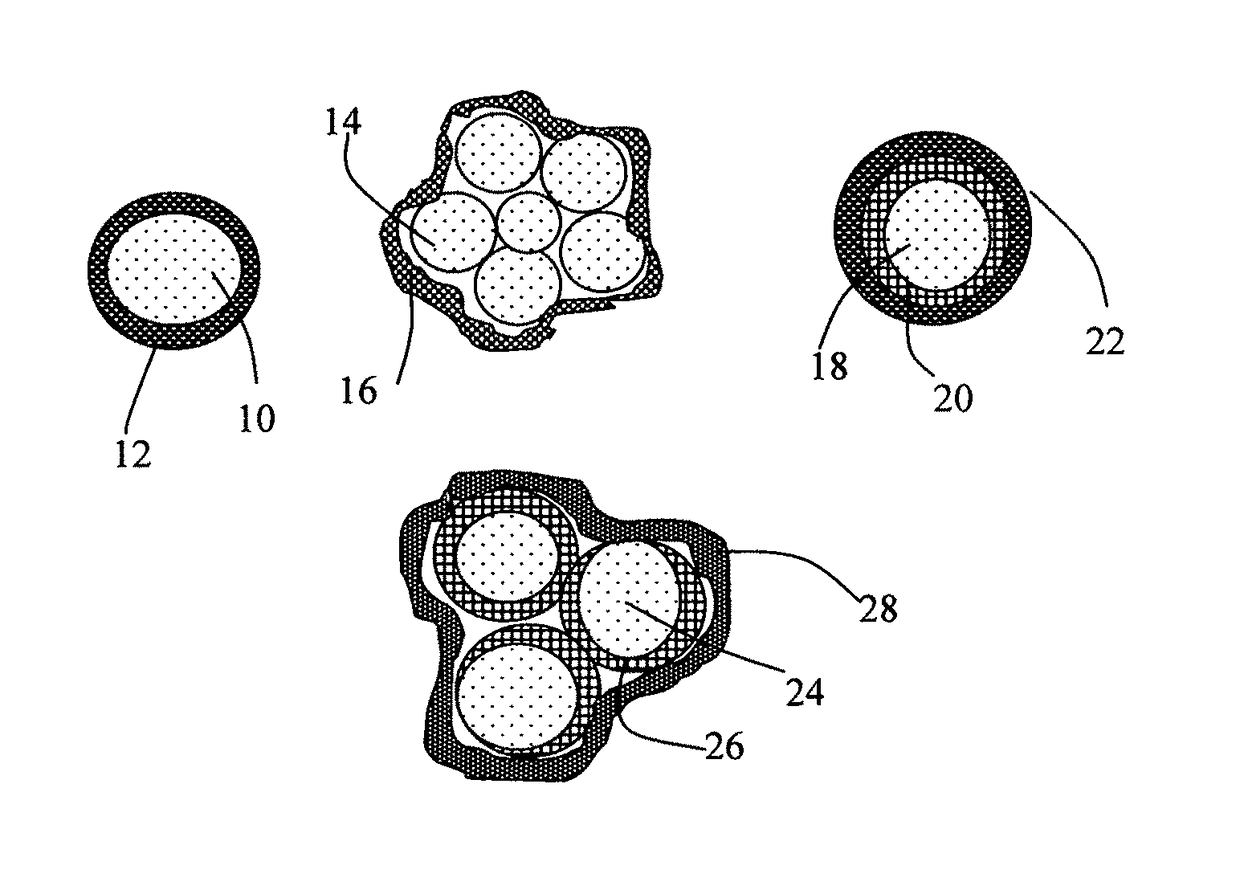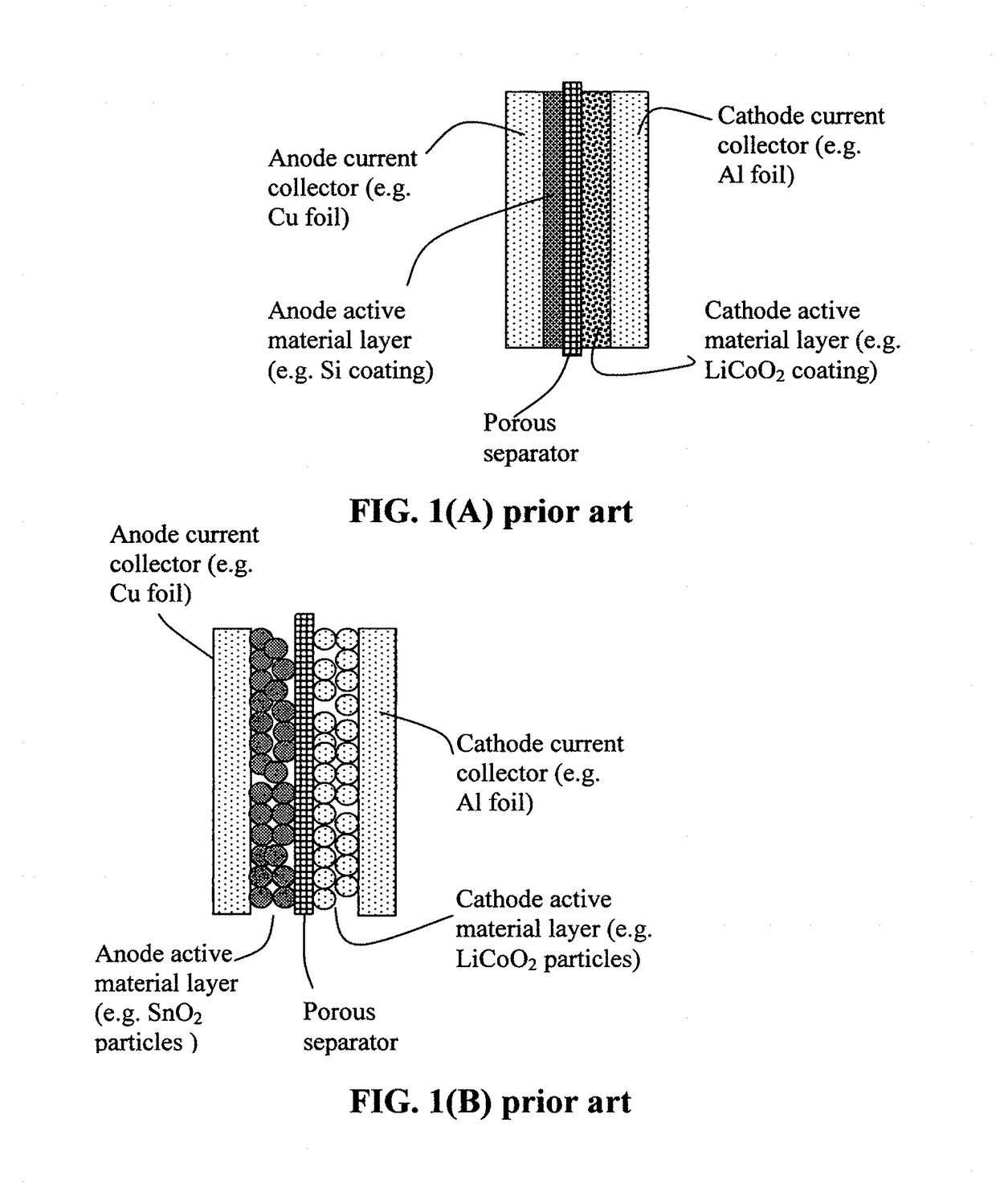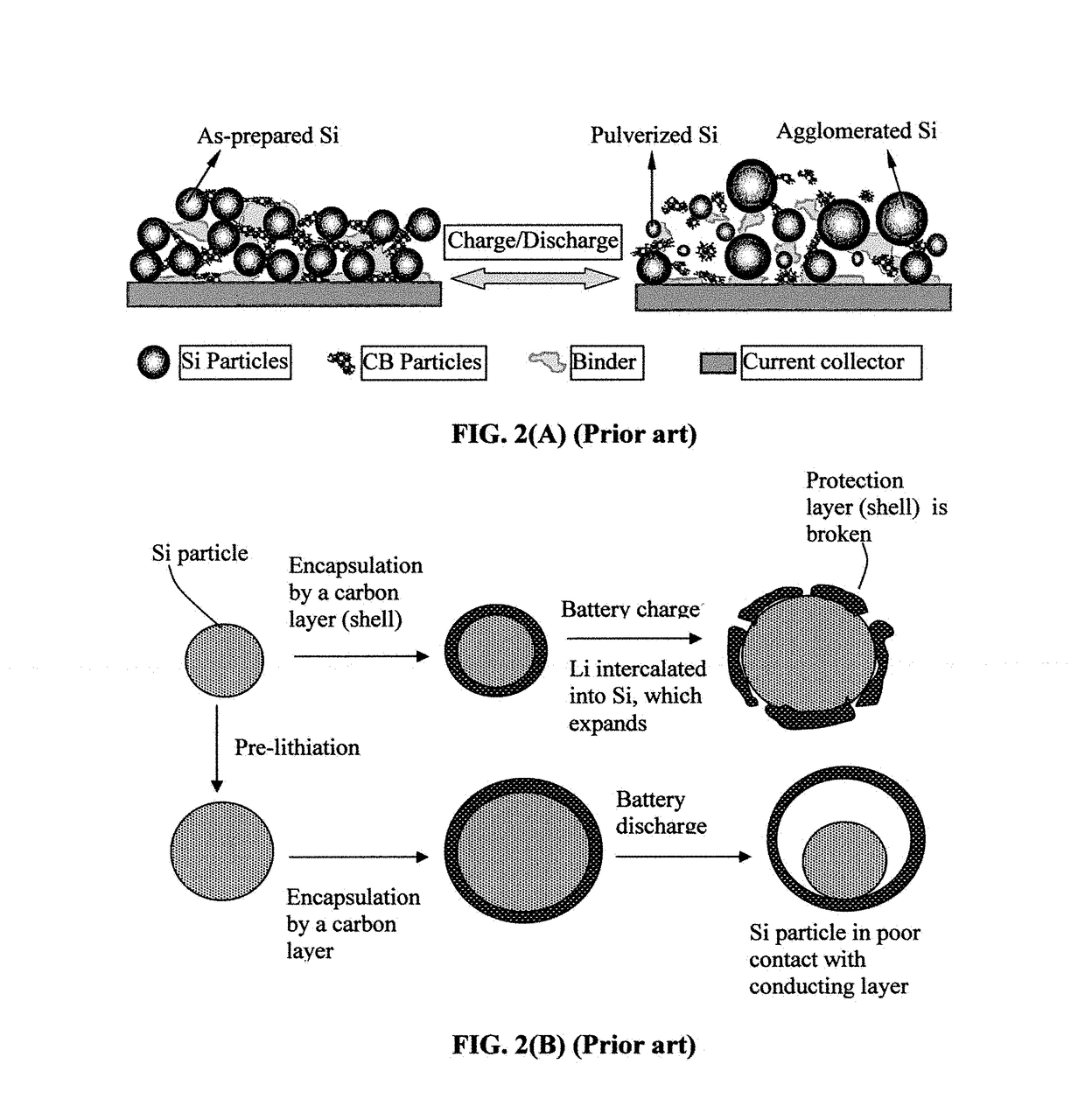Elastomer-Encapsulated particles of high-capacity anode active materials for lithium batteries
a lithium battery, high-capacity technology, applied in the manufacturing process of electrodes, cell components, electrochemical generators, etc., can solve the problems of severe pulverization (fragmentation of alloy particles), loss of contacts between active material particles and conductive additives, etc., to improve lithium ion conductivity to a polymer
- Summary
- Abstract
- Description
- Claims
- Application Information
AI Technical Summary
Benefits of technology
Problems solved by technology
Method used
Image
Examples
example 1
Cobalt Oxide (Co3O4) Anode Particulates
[0086]An appropriate amount of inorganic salts Co(NO3)2.6H2O and ammonia solution (NH3.H2.O, 25 wt. %) were mixed together. The resulting suspension was stirred for several hours under an argon flow to ensure a complete reaction. The obtained Co(OH)2 precursor suspension was calcined at 450° C. in air for 2 h to form particles of the layered Co3O4. Portion of the Co3O4 particles was then encapsulated with a urea-urethane copolymer with the encapsulating elastomer shell thickness being varied from 17 nm to 135 nm.
[0087]For electrochemical testing, the working electrodes were prepared by mixing 85 wt. % active material (encapsulated or non-encapsulated particulates of Co3O4, separately), 7 wt. % acetylene black (Super-P), and 8 wt. % polyvinylidene fluoride (PVDF) binder dissolved in N-methyl-2-pyrrolidinoe (NMP) to form a slurry of 5 wt. % total solid content. After coating the slurries on Cu foil, the electrodes were dried at 120° C. in vacuum ...
example 2
Elastomer-Encapsulated Tin Oxide Particulates
[0092]Tin oxide (SnO2) nano particles were obtained by the controlled hydrolysis of SnCl4.5H2O with NaOH using the following procedure: SnCl4.5H2O (0.95 g, 2.7 m-mol) and NaOH (0.212 g, 5.3 m-mol) were dissolved in 50 mL of distilled water each. The NaOH solution was added drop-wise under vigorous stirring to the tin chloride solution at a rate of 1 mL / min. This solution was homogenized by sonication for 5 m in. Subsequently, the resulting hydrosol was reacted with H2SO4. To this mixed solution, few drops of 0.1 M of H2SO4 were added to flocculate the product. The precipitated solid was collected by centrifugation, washed with water and ethanol, and dried in vacuum. The dried product was heat-treated at 400° C. for 2 h under Ar atmosphere. A dilute elastomer-solvent solution (0.01-0.1 M of cis-polyisoprene in cyclohexane and 1,4-dioxane) was used as a coating solution in an air-suspension method to produce elastomer-encapsulated SnO2 part...
example 3
Tin (Sn) Nano Particles Encapsulated by a Styrene-Butadiene Rubber (SBR)
[0094]Nano particles (76 nm in diameter) of Sn were encapsulated with a thin layer of SBR shell via the spray-drying method, followed by curing of the butadiene segment of the SBR chains to impart high elasticity to the SBR. For comparison, some amount of Sn nano particles was encapsulated by a carbon shell. Carbon encapsulation is well-known in the art. Un-protected Sn nano particles from the same batch were also investigated to determine and compare the cycling behaviors of the lithium-ion batteries containing these particles as the anode active material.
[0095]Shown in FIG. 7 are the discharge capacity curves of three coin cells having three different Sn particles as the anode active material: elastomer-encapsulated Sn particles, carbon-encapsulated Sn particles, and un-protected Sn particles. These results have clearly demonstrated that elastomer encapsulation strategy provides the very best protection agains...
PUM
 Login to View More
Login to View More Abstract
Description
Claims
Application Information
 Login to View More
Login to View More - R&D
- Intellectual Property
- Life Sciences
- Materials
- Tech Scout
- Unparalleled Data Quality
- Higher Quality Content
- 60% Fewer Hallucinations
Browse by: Latest US Patents, China's latest patents, Technical Efficacy Thesaurus, Application Domain, Technology Topic, Popular Technical Reports.
© 2025 PatSnap. All rights reserved.Legal|Privacy policy|Modern Slavery Act Transparency Statement|Sitemap|About US| Contact US: help@patsnap.com



